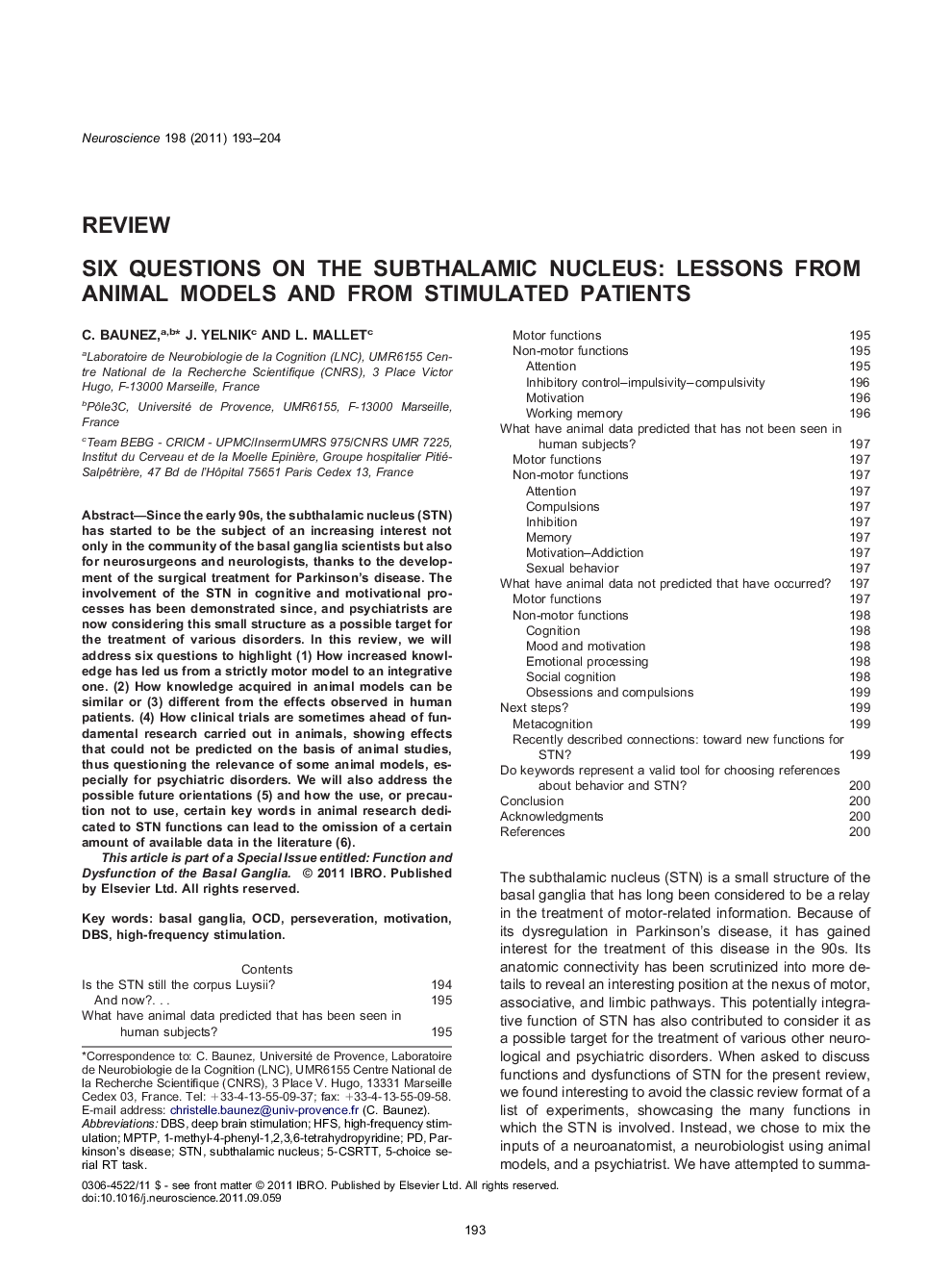| Article ID | Journal | Published Year | Pages | File Type |
|---|---|---|---|---|
| 4338720 | Neuroscience | 2011 | 12 Pages |
Since the early 90s, the subthalamic nucleus (STN) has started to be the subject of an increasing interest not only in the community of the basal ganglia scientists but also for neurosurgeons and neurologists, thanks to the development of the surgical treatment for Parkinson's disease. The involvement of the STN in cognitive and motivational processes has been demonstrated since, and psychiatrists are now considering this small structure as a possible target for the treatment of various disorders. In this review, we will address six questions to highlight (1) How increased knowledge has led us from a strictly motor model to an integrative one. (2) How knowledge acquired in animal models can be similar or (3) different from the effects observed in human patients. (4) How clinical trials are sometimes ahead of fundamental research carried out in animals, showing effects that could not be predicted on the basis of animal studies, thus questioning the relevance of some animal models, especially for psychiatric disorders. We will also address the possible future orientations (5) and how the use, or precaution not to use, certain key words in animal research dedicated to STN functions can lead to the omission of a certain amount of available data in the literature (6).This article is part of a Special Issue entitled: Function and Dysfunction of the Basal Ganglia.
▶STN, considered a motor structure, is an integrative structure. ▶STN studies on animals and human patients can lead to similar effects. ▶STN studies on animals and human patients can lead to different effects. ▶Clinical trials targeting the STN are sometimes ahead of research in animals. ▶Future orientations for STN functions are metacognition and sensorial integration.
